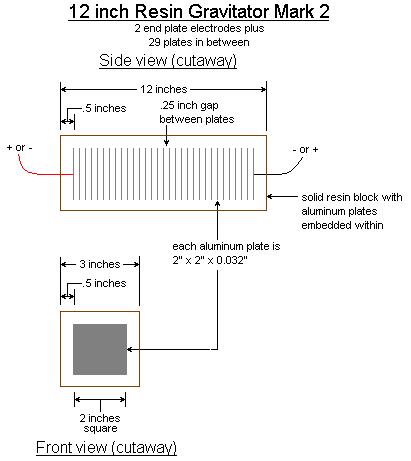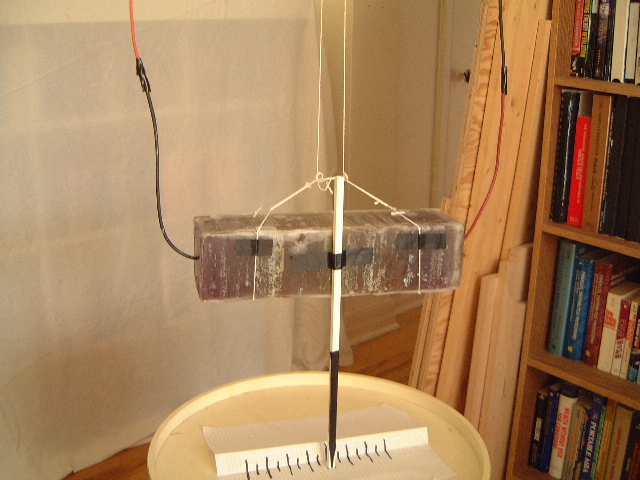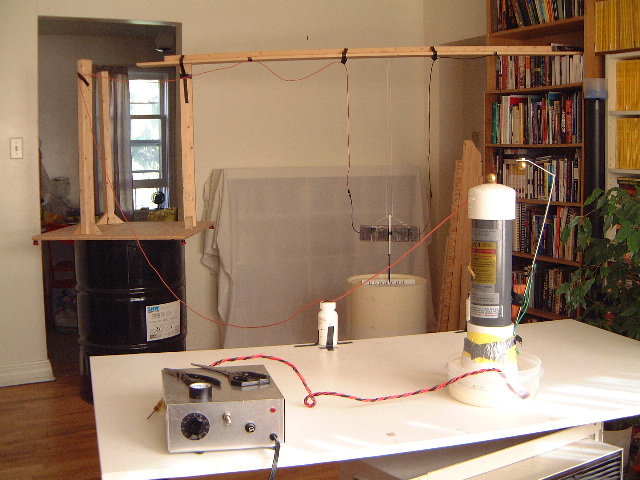These gravitators were made of MotoMaster resin usually used for making automotive body repairs. From outward appearances they are 12"x3"x3" solid blocks of resin with a wire sticking out from each end.
|
Click here for details of the construction.
June to August 5, 2001 - Mark 1
I built my Mark 1 version. This one had an arbitrarily selected gap or spacing between the plates. It had 61 plates between the electrodes which works out to an average spacing between the plates of 0.15".
This was suspended as a pendulum to test for movement. No movement was seen however, prior to applying voltage for the first time, the device was swinging back and forth a bit simply because I hadn't stilled it. When I first applied voltage, it was very low (near 50kV) and the swinging stopped though if it was due to very slight force in one direction, I couldn't tell which direction. Then, as I turned voltage up higher, the swinging resumed. I was using my HVG10 high voltage power supply.
If what I saw was not just an effect in the wires then it was a good sign that it worked. The plates were very close together so the breakdown voltage was probably low. So at low voltage, the dielectric holds but at higher voltage it would break down and the effect would be lost.
Unfortunately such a breakdown also breaks the device. I tried again at low voltage but the swinging remained.
August 14 to September 2, 2001 - Intermediate tests
I built a resin gravitator with just the two electrodes in an effort to see what the thinnest spacing would be without breakdown at the highest voltage my power supply could do.
I built one with a .5 inch spacing and another with a .25 inch spacing. At maximum voltage, neither broke down. Since Mark 1 was 12 inches long with 61 plates and a spacing of about 0.15 inches and broke down at moderate voltage, I decided to build another 12 inch one with .25 inch spacing. Note that I've since learned that this logic was wrong. A gravitator with two endplates connected to the power supply and with isolated plates in between the endplates is considered a series capacitor. The voltage divides evenly amoungst the spaces between the plates. This means that if I apply 25kV to the endplates, and I have 26 plates altogether meaning that I have 25 spaces, the voltage across each space is only 1kV, not 25kV as I'd previously thought. I should be able to put the plates 25 times as close together.
September 23 to October 7, 2001 - Mark 2
I built another 12 inch one with .25 inch spacing between plates. This resulted in the gravitator in the above diagram with 29 unconnected plates between 2 electrode plates.
The device was completed October 6, 2001 and tested hanging as a pendulum. Both polarities were tried with no movement in either direction. It was tried with voltage turned up gradually and with voltage already set to specific voltages.
|
|




